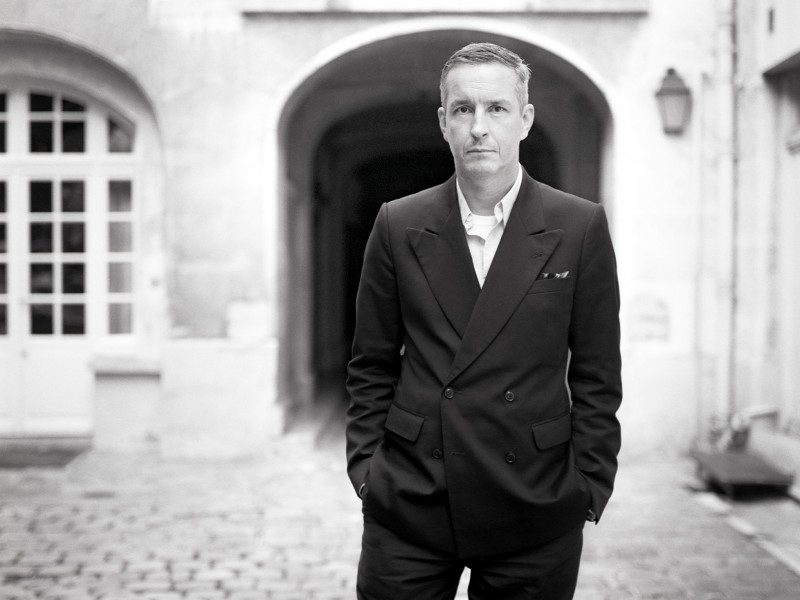Amid the white noise of reality TV and the whining clamour of the wannabe celebrity, it’s startling to find someone with actual accomplishments who prefers to remain anonymous. This is not a new phenomenon, of course. In fact, it was once admired and aspired to. It was called ‘cool’.
“This is not about me,” says the collector in question. “It’s about an appreciation of history and lineage, provenance and design.” This self-effacement, I have come to appreciate, is common among Maserati owners. Yet it doesn’t stop the crowd gathering.
Beguiling them is a silver, pre-production 1956 Maserati GT, designed by Giovanni Michelotti for the Turin coachbuilder Allemano. Hand built a year before Maserati went into full production with the 3500 GT, this, the A6G is, according to its owner, “a little bit unique because it left the factory with full racing specifications”.
Indeed so totally did racing preoccupy Maserati that between 1946 and 1957 the company produced just 137 cars before realising the potential—and economic necessity—of the production sports car. “These are really handmade little jewels,” the owner recalls. “Only twenty-one were made with the Allemano body, fifteen are left and no two are alike.”
He should know: he owns two of them. These incredible cultural artefacts have been in his possession since 2007 and in his heart much longer; bought from the same collector who beat him at auction when he was just 24. “Twelve years later the stars aligned,” he recalls. “The collector needed some money and I was in the right place at the right time.”
The GT—Gran Turismo, or grand tourer—was designed for well-to-do gentlemen (‘whose overcoats are lined with cashmere,’ as Maserati’s history books discretely describe them) who liked to cruise the Continent in luxury, style and—naturally—at speed. The Maserati A6G was considered the finest handling car in the world at the time. “It’s lusso combined with a full-competition engine,” says the collector. “This is effectively a racing car complete with a gentleman’s carriage.”
More than a badge, the Maserati trident honours Bologna with its statue of King Neptune where the Maserati brothers’ journey began in 1914. The trident can’t help but conjure a devilish streak, brought to life most acutely as you shift between first and second gear. “A sophisticated, wealthy gentleman was not going to want a tractor to drive around. He wants that fire, that pedigree.” The A6G presents an elegant and timeless design signature that was leveraged by Aston Martin and a number of other coach builders in the years that followed. It was indeed ahead of its time.
So what does a collector of (currently half a dozen) exceptionally fine Italian automobiles look for? Pedigree is one thing. “This is a piece of history. Maserati’s very first Gran Turismo. The owners of Maserati would have driven this very car. It would have been tested by factory racers. The A6G is a fusion of competition pedigree and the most resolved design thinking of the period. Finely tuned over two years, between the legendary Fangio’s wins in 1954 and after he won races in the 300S. This is as pure an expression of the time as you’re likely to find.”
But as with many collectors, there is a strong personal attachment driving their passion. In this case, one tinged with poignancy. “My heritage is Italian and I’m very passionate about Italian design.” He confides that he still remembers his first drive in an Alfa Romeo at the age of two. His father died when he was four. “I’m very much my father’s son, but I had to learn the hard way. Growing up without a father was very challenging, being true to yourself and not actually having the road mapped out for you.”
That Italian heritage gave him strength as a young man, he recalls. Today he returns to Italy on business many times a year and regularly drives the A6G in famed races such as the Mille Miglia. As we overtake through traffic and wind around the bay, two things are noticeable: the engine’s eager growl and the public’s appreciation and turning heads.
As we drive he recalls a decidedly grander tour he undertook with his wife. “We were in Italy for the Silver Flag race and were to attend a black-tie dinner being held under the stars in the middle of a 600-year-old piazza. The A6G was one of the cars to be put on display. Roaring through the hills of Italy from our hotel 30kms away, it was delightful to see so many generations of Italians coming out of the cafes, tipping their hats and smiling as we drove by. The Italians recognise that the car is part of their history, they appreciate its beauty and design and they are very proud of it. It’s very humbling to be a custodian of that kind of object.
“Quite simply, they were the best engineered cars in the world, the most beautiful. They were works of art and they were the most successful. The A6G is very much functional art. It has an ‘X’ factor that you simply can’t quantify. Each has a burden of history and each offers a unique way of seeing the world. A way of recognising the passion of a culture and respecting what was accomplished.
“It’s not just about a badge, it’s about an idea of luxury and the culture that sits behind it. It’s about a unique and identifiable DNA. Similar to what draws someone toward a made to measure suit as opposed to something off the rack perhaps. It’s the way it is made, the artisanship invested, the knowledge behind each detail, the materials, the way it feels and the experience derived from it.
Since returning to Italy after several ownership changes—Citroen, Chrysler and now Fiat—Maserati is undergoing one of the great contemporary design renaissances. One hundred years after the Maserati brothers founded the marque, it’s enjoying an era of production success that might almost match its illustrious racing history.
Indeed when the Pininfarina designers took on the task of redesigning Maserati in 2007 they looked to the 1950s, tapping into the dynamism of the long, ebbing and flowing fenders of the 450S and the A6GCS.
Now Maserati’s design has been brought in-house, with former Pininfarina designer Lorenzo Ramaciotti at the helm. “I believe a lot in imprinting,” Ramaciotti says, echoing our collector’s sentiments about recognising provenance and authentic design signatures. Despite the Maserati design centre having fourteen nationalities represented within its borders, Ramaciotti says “The philosophy of a company is woven into its environment. Today, Italian design, more than a passport, is a state of mind.
For more visit www.maserati.com
Related Features
-
44
-
-
-

